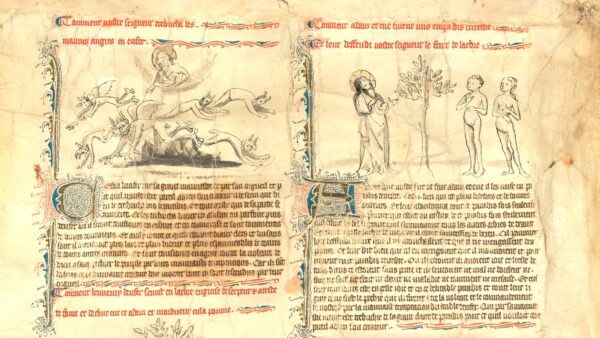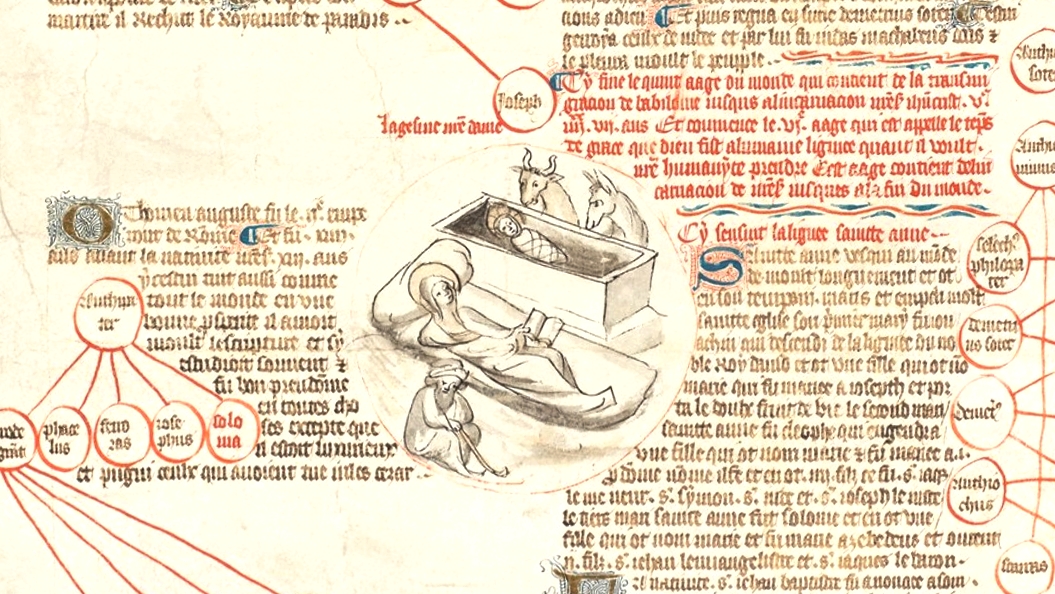Astonishing in its format, fascinating in its content and intriguing in its history, the Manuscript of the Six Ages of the World, preserved in Sion, had everything to attract the attention of historians. After more than three years of deciphering, translation, analysis and research, the 14th century work is now presented to the general public in a book, an exhibition and a website. Stève Bobillier deciphers this surprising document for cath.ch.
Like any good Valais story, this one started around a bistro table, laughs Stève Bobillier. A friend working for the digitization of medieval codices at the University of Friborg told her about her difficulty in digitizing an 8.5 meter long roll of parchment from the Middle Ages. Piqued by curiosity, the specialist in medieval philosophy went to see him on the spot. Fascinated, he immediately sought to learn more about the Manuscript of the Six Ages of the World from the Supersaxo library in Sion.
He noticed that the document inventoried and known to specialists had never been studied in an exhaustive manner. “I applied for a scientific grant from the State of Valais to propose the study of this medieval manuscript. The scholarship was granted to me for three months. It was only when I started the study that I realized its importance and finally the work took me three and a half years.
A roll of parchment 8.5 meters long
The most remarkable of Manuscript of the Six Ages of the World is its roll format, which was little used in the Middle Ages. It is above all exceptional for its dimension of 8.5 meters in length. It is rare to be able to see it fully deployed. “Imagine the table you need! We really have the impression of seeing the centuries unfold before our eyes.”
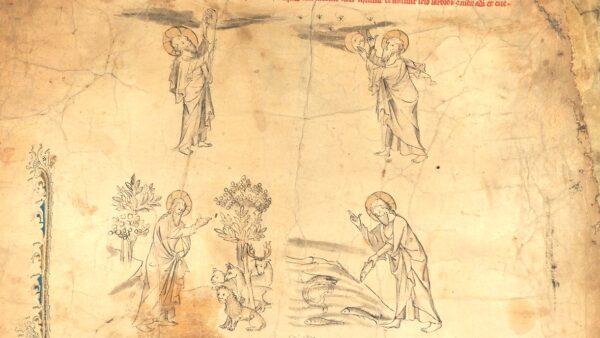
Carefully calligraphed in black and red, decorated with 36 drawings and adorned with illuminations, it belongs to the category of ceremonial objects whose use is impractical, but whose possession is a sign of prestige.
“The origin of these scrolls dates back to the University of Paris, where teachers needed educational materials to deliver their lessons and allow students to memorize the lesson. A bit like the drop-down cards in our primary school,” explains Stève Bobillier. Reason for which, they are also very illustrated.
An origin from the north of France
The manuscript comes from the north of France and its drawings are linked to a Parisian workshop. The text is written in Old French with elements of Picard patois. But the roll does not contain a colophon (note providing the indications relating to the work Editor’s note). We therefore know neither its author(s) nor its sponsors. For Stève Bobilier, he probably comes from a clerical background. The fact that it is written in French and not in Latin rather rules out a university origin, notes the former bioethicist at the Conference of Swiss Bishops (CES). Its construction dates back to the last quarter of the 14th century. Its writing is very legible, and even today, the visitor will be able to decipher it quite easily. We can consider that its author seeks to disseminate his knowledge more widely beyond the university.
Genealogy of a struggle against the Devil, from Creation to the Apocalypse.
Stève Bobillier endeavored to decipher, transcribe and translate the entire text. the Mmanuscript of the six ages of the worlds mixes biblical and secular history. The idea is to have a complete history from the creation that we will try to date. History is then divided into six ages or periods, as is still done today. We can thus estimate the date of Genesis and conversely that of the Apocalypse, that is to say the end of time and the return of Christ. After Adam and Eve, we find the biblical prophets, but also the king of Babylon Nebuchadnezzar, Alexander the Great or Julius Caesar, to finally arrive at Jesus Christ.
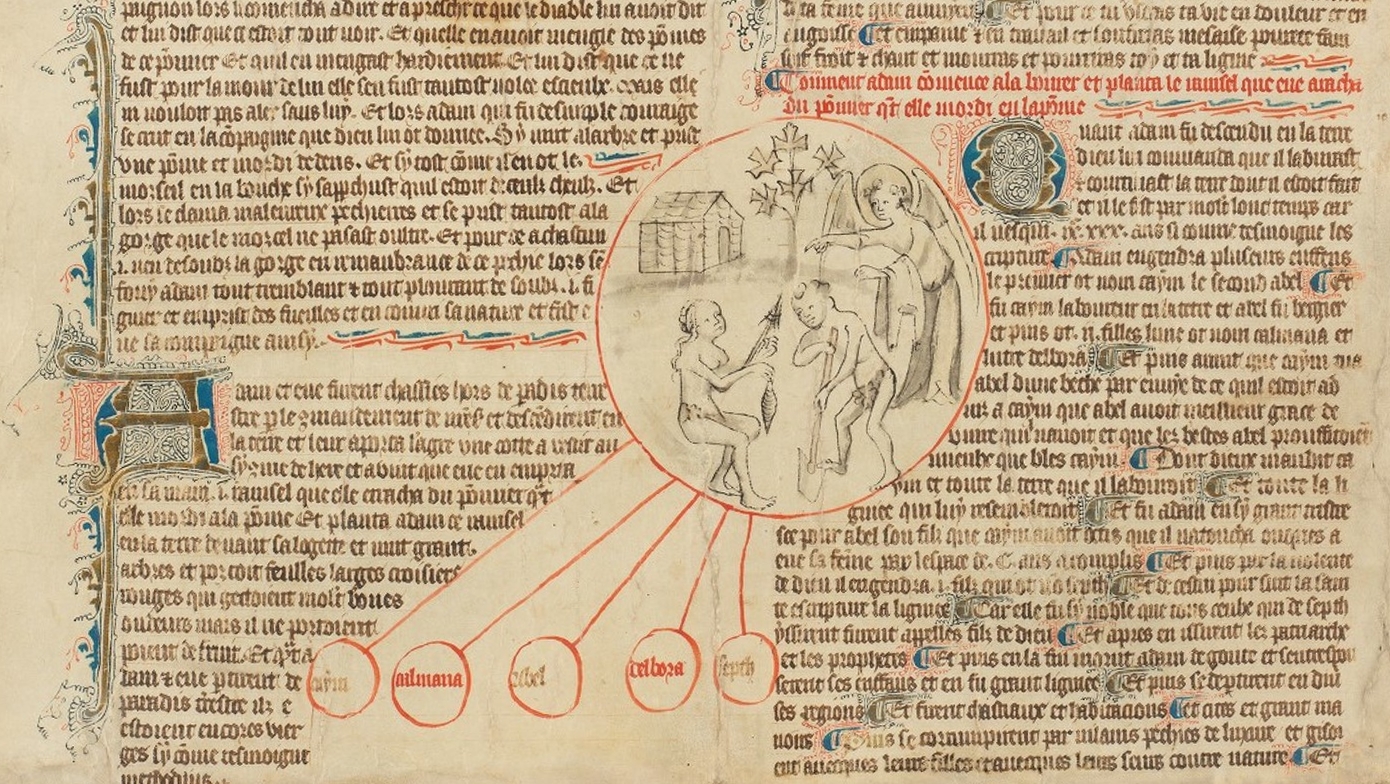
Unlike the ancients, the Christian view of history is no longer cyclical, but linear, with a beginning and an end. With the coming of Christ, humanity entered the sixth age which is the last, the duration of which we are trying to determine. We already find this conception in Grégoire de Tours (538-594) nearly a thousand years earlier, notes Stève Bobillier.
The text gives a moral for each biblical or secular story that shows how the good are rewarded and the wicked punished. “We therefore have a genealogy of the lineage of good from Adam to Christ, with opposite a progressive emergence of the Antichrist. It is a call to choose sides.
In Supersaxo hands since the mid-15th century
How did this manuscript come into the hands of the Supesaxos in Sion? “We don’t know, because we don’t have any mention of it entering the Supersaxo library. But its presence there is attested from the middle of the 15th century. We do not know if it was Bishop Walter Supersaxo (1402-1482) or his natural son Georges (1450-1529) who acquired it. The Sédunoise family is then is very rich and powerful, very cultivated too. It is notably a creditor of the King of France François 1er. The scroll can be considered to have arrived in Zion about fifty years after its creation.
The manuscript remained in the Supersaxo library for a long time, then passed into the hands of the State of Valais and finally, at the beginning of the 20th century, of the Gottfried Keller foundation which ensured its conservation and restoration and deposited it in the Valais archives. (cath.ch/mp)
The Six Ages of the World and the Witchcraft Trials
Beyond of the manuscript and its history, Stève Bobillier was interested in the Supersaxo period which saw the appearance of the first witchcraft trials in Valais, from 1428. For him, the vision developed in particular in the Manuscript of the Six Ages of the Worldparticipates directly in this historical phenomenon which will spread to other regions of Europe in the 16th and 17th centuries.
Overall until the 12th century, for Christians, the way forward was to do good. With the Calabrian theologian Joachim de Flore (1135-1202) appears the idea that we should not wait passively for the end of time, but that we must fight actively against evil, against the devil, explains Stève Bobillier. At the beginning, the evil is especially the heretic, but gradually it will be the wizard or the witch. “We can say that this manuscript influences or illustrates a certain vision of the world, of the struggle of good against evil.” Hence the subtitle of the book Genealogy of a struggle against the Devil from Creation to the Apocalypse.
For a coherent judicial system
One of the ambitions of the Supersaxos is to set up a more coherent judicial system. Roman law has been rediscovered for some time and the justice exercised at the whim of the lords was far too subjective and arbitrary. The law must be codified and exercised in a more neutral way, with, among other things, the establishment of an investigation (inquisition) and defence, recalls the researcher. The bishop, who in this case is also the secular sovereign, intends to base his power on this justice.
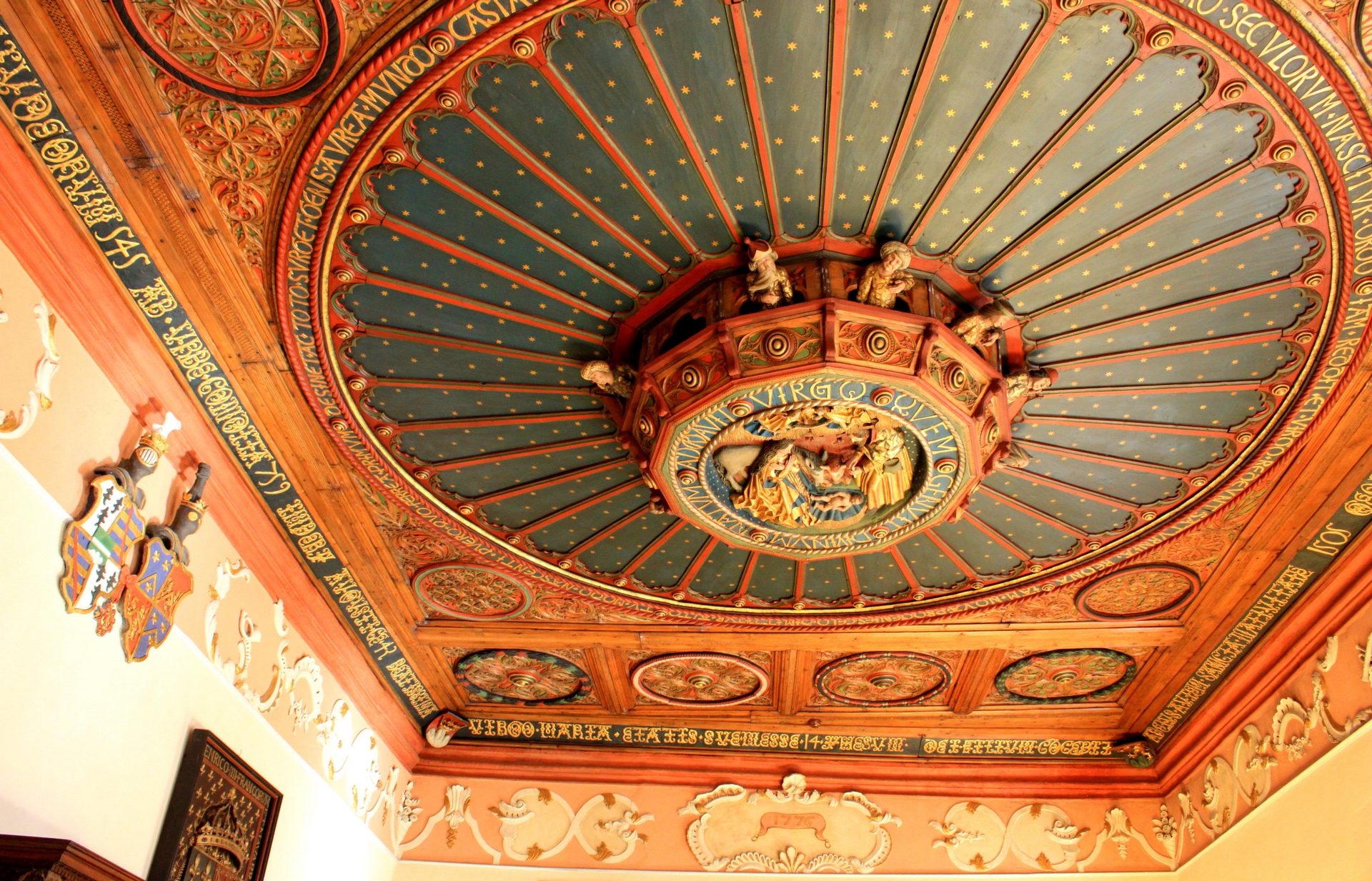
The Supersaxo library thus contains a number of law and inquisition works, which is rare for the time. This shows their desire to have the best possible skills to judge in good justice. This can be seen, for example, in several cases of women accused of witchcraft by the dizains who are simply released by the bishop. “Having said that, they cannot be exonerated from executing witches at the stake.” But, for Stève Bobillier, this is not the primary will of secular powers, nor of religious powers.
It is in this context that the first witch hunts developed in Valais, from 1428, the date of the first systematic pursuits of a large number of people. The dizains (districts) of Haut-Valais, by the articles known as of Naters, decide that it is enough the testimony of two people to launch an inquisition procedure. This leads to accusations between clans and families or between rich owners and workers.
Most often the charges relate to disasters involving wine or wolf attacks. (In Fribourg, it will be cows and milk). If we have a bad harvest, if the cheeses or the wine go bad, the one who has a good harvest and good wine will be accused of witchcraft. Initially, it therefore mainly affects the rich and especially men, contrary to certain received ideas, says Stève Bobillier.
Spiritual concern?
In this context, where the first wizards were denounced by the secular powers of the dizains, the Supersaxo want to recover the judicial power on the idea that these questions of witchcraft have an obviously spiritual dimension and therefore depend on ecclesiastical power.
Is the will of the Supersaxo to take this fight against evil in hand the result of a real spiritual concern or is it rather motivated by a desire to establish their power? The question remains open. But for the researcher, ignoring one of these two dimensions would be lacking in rigor. The fear of the Apocalypse as a moment of judgment is a very strong belief in the Middle Ages. It is therefore necessary to prepare for it, by converting personally, but also by eradicating evil in society.
It must nevertheless also be said that the person convicted of witchcraft sees himself deprived of his property which is divided into three parts between the civil authority, the bishopric and the administration. At the time, the Supersaxos monopolized two-thirds of the property. The wealthy families that emerge and form a counter-power can also be dismissed under the accusation of witchcraft.
A book, an exhibition and a website
In addition to publication in the form of book published by Presses Inverses on Manuscript of the Six Ages of the World is the subject of a exposure visible until February 25, 2023 at the Arsenals of Sion and a dedicated website with many resources including three documentary videos of about ten minutes. PM
© Catholic Media Center Cath-Info, 15.12.2022
The rights to all content on this site are registered with Cath-Info. Any distribution of text, sound or image on any medium whatsoever is chargeable. Registration in other databases is prohibited.
We would like to say thanks to the writer of this short article for this remarkable content
The ‘Manuscript of the Six Ages of the World’: an amazing parchment – Swiss Catholic Portal
You can find our social media profiles here , as well as additional related pages here.https://nimblespirit.com/related-pages/



